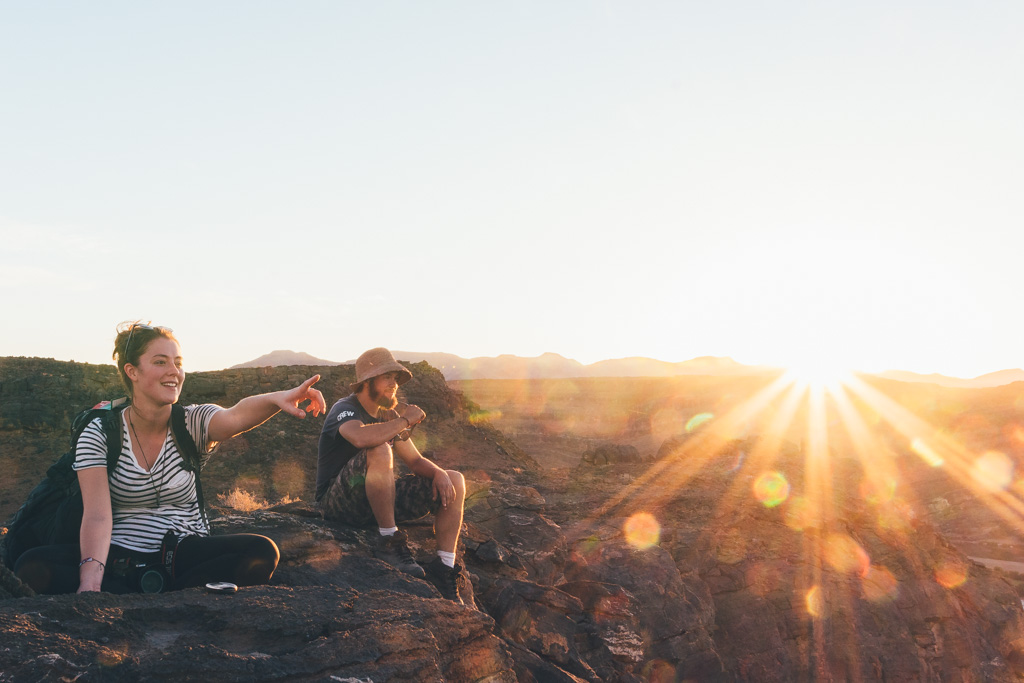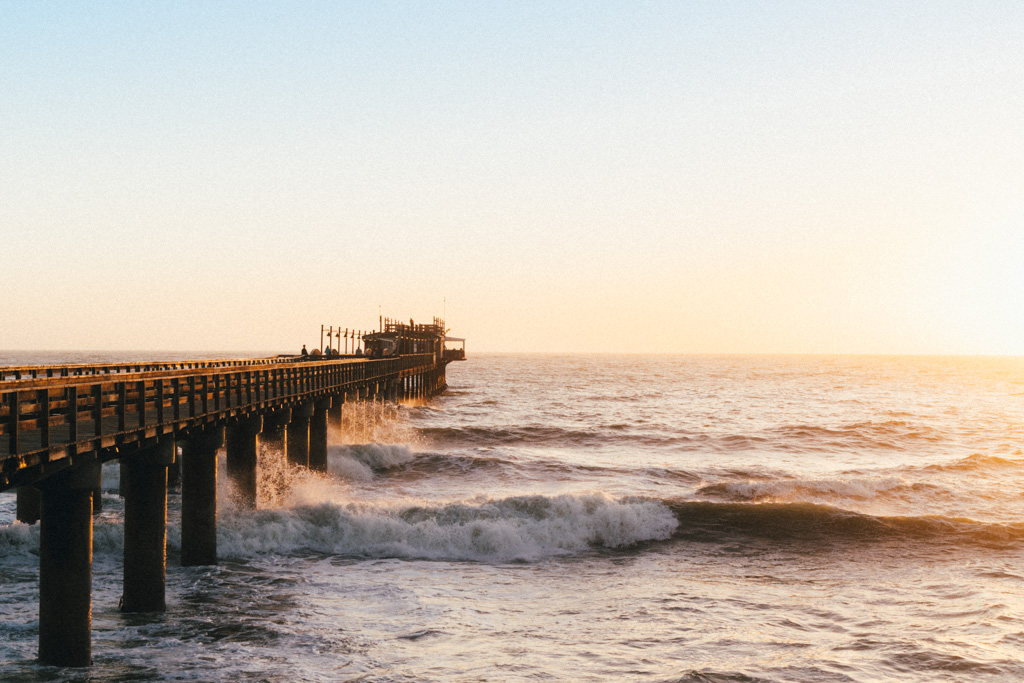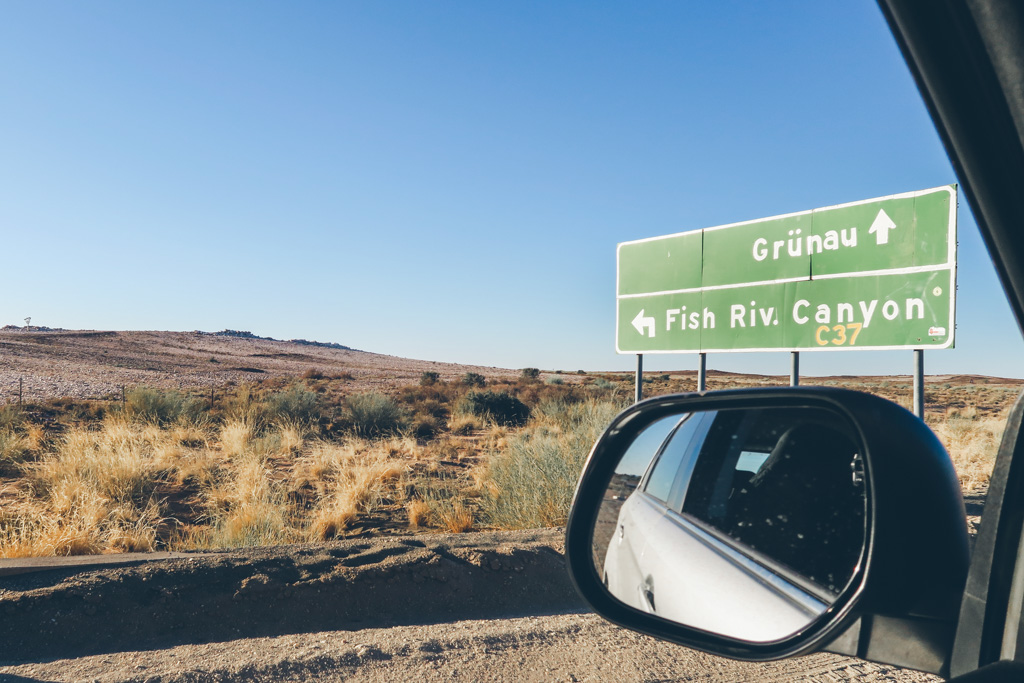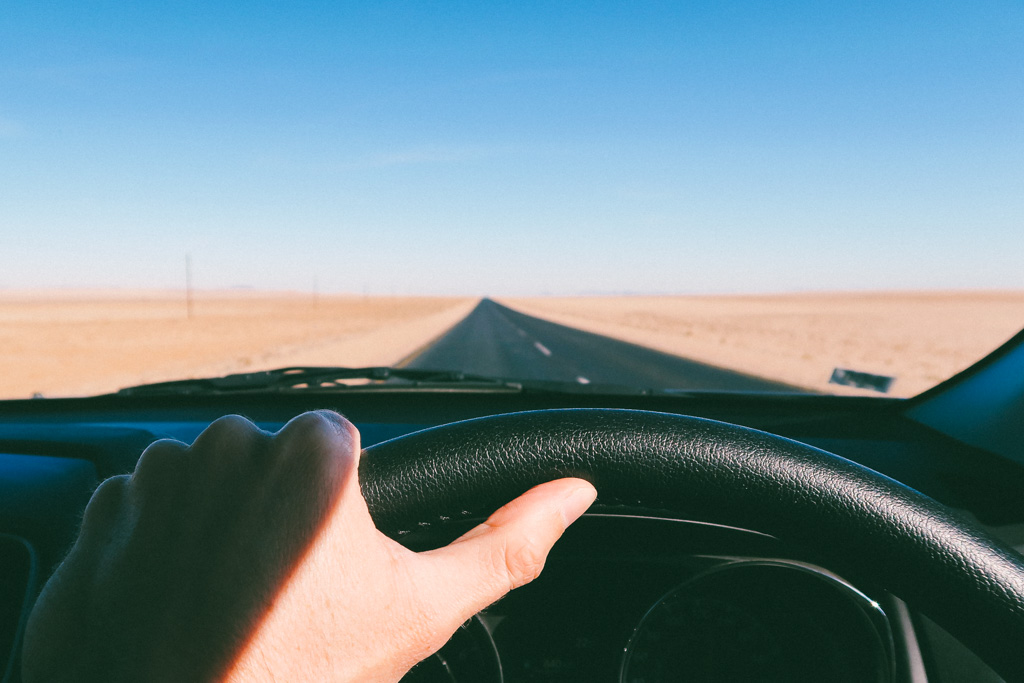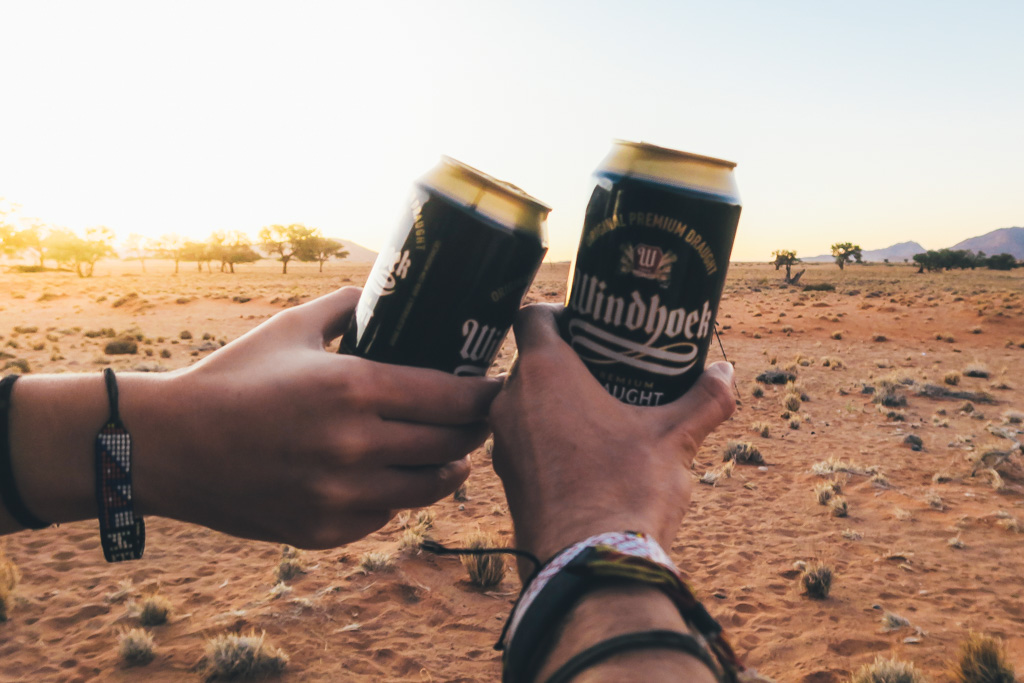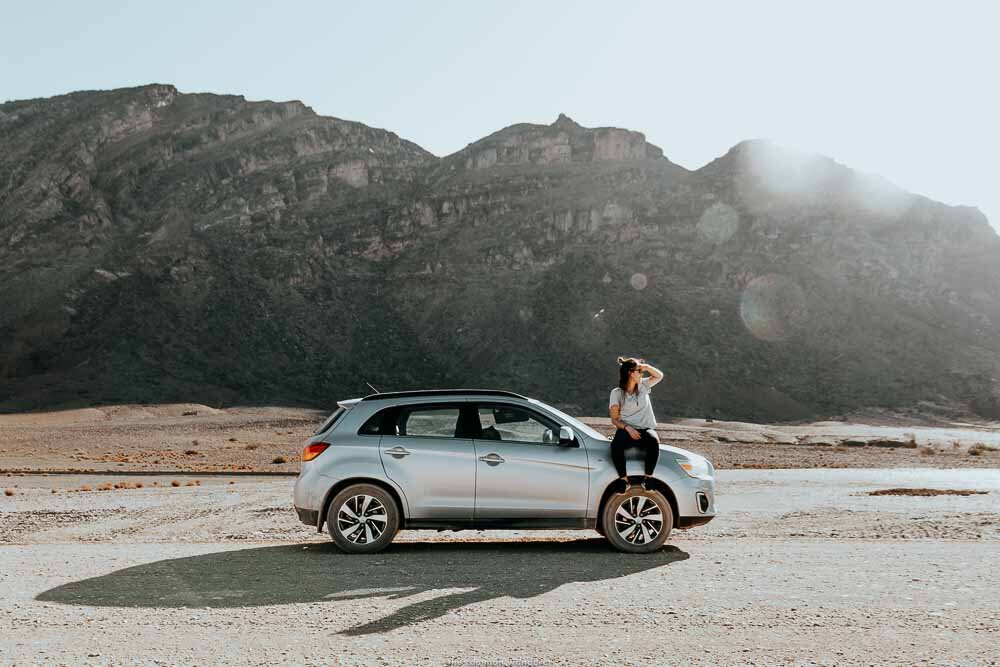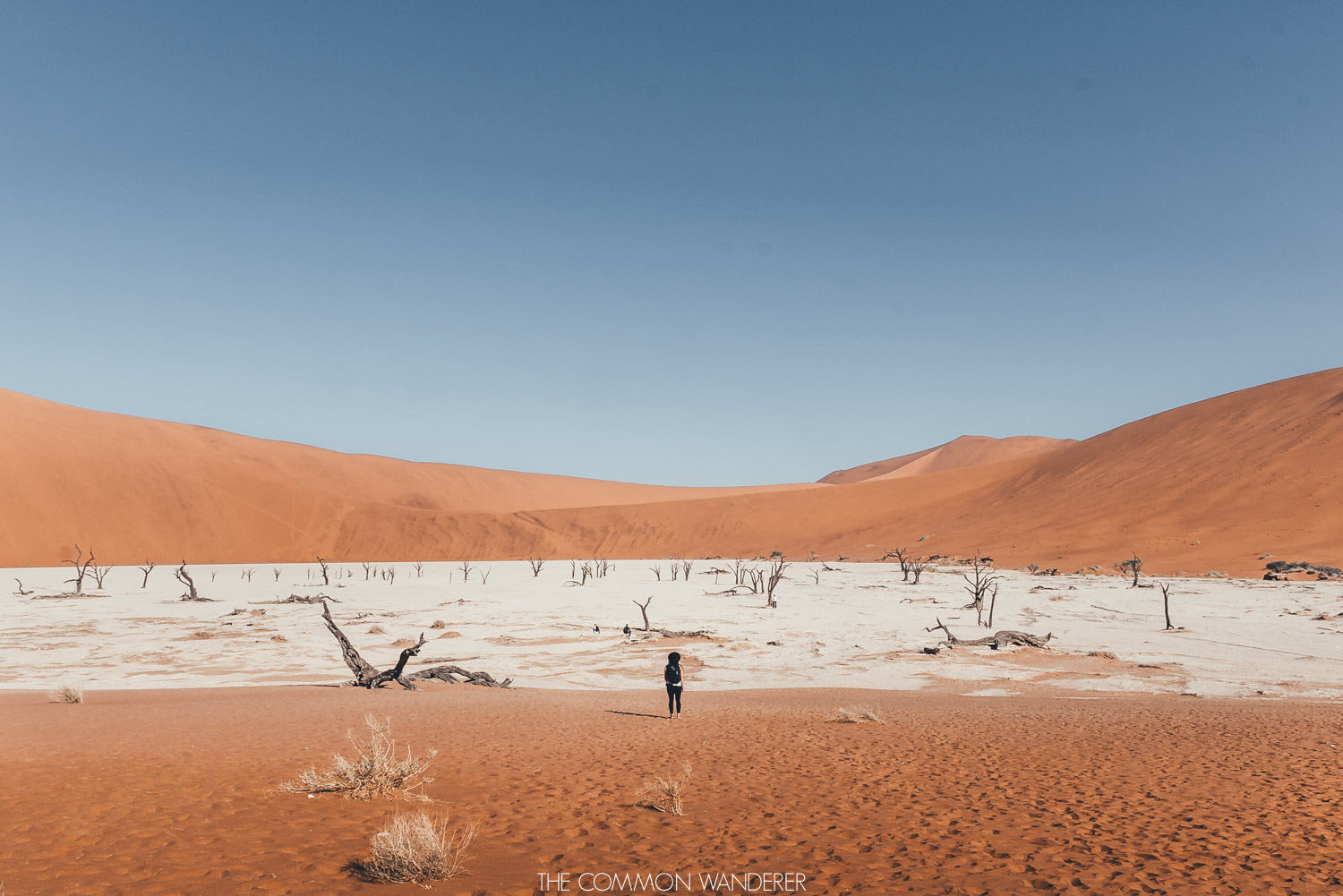Our ultimate Namibia travel guide - what to see & where to stay
Explore Namibia, our favourite country in the world, and the land of endless horizons with our Namibia travel guide, complete with all the information you need to plan your incredible journey.
“
It’s difficult to think of an iconic African landscape that Namibia doesn’t possess.”
Namibia is unlike anywhere else on Earth; a place where you’ll feel incredibly small by the magnitude of your surroundings and in complete awe of Mother Nature's finest achievements.
Driving in the middle of the Namib desert, dead mountains and sand dunes surrounding us, having not seen any form of life for hours, we’d never felt more insignificant. To be honest, it was the most exhilarating feeling we’ve had on our travels. And that’s Namibia’s appeal.
With the violent Atlantic Ocean to one side, and the world's oldest desert on the other, Namibia is a seriously rugged destination. It’s home to natural wonders such as deep Fish River Canyon, the towering sand dunes of Sossusvlei and Swakopmund, the wildlife mecca of Etosha National Park, the glorious mountains of Spitzkoppe, a rich indigenous and colonial history, and thriving adventure activity scene.
And it’s home to some pretty damn good beer.
If you’re after one of the great road trip adventures, keen to see the Big Five, or to have an adrenalin kick of epic proportions, visiting Namibia is a must.
-
THINGS TO DO IN NAMIBIA
-
Wild and dramatic, vast and breathtakingly beautiful; from the soaring dunes to the depths of Africa’s largest canyon, Namibia is home to huge amount of incredible things to see and do.
You can find our list of the sights you absolutely must visit in Namibia here.
-
WILDLIFE
ETOSHA NATIONAL PARK
If wildlife is high on your Namibian bucket list, then Etosha National Park is the place to see it. It’s unique landscape provides one of Africa’s great wildlife viewing destinations; here you can simply park your 4wd near a waterhole and watch the animals come.
-
THE OUTDOORS
FISH RIVER CANYON
The second largest canyon in the world after the Grand Canyon, Fish River Canyon’s sheer size will blow your mind. Measuring 160km in length, 27km in width and a depth of 550m, simply viewing it is enough. But there’s also a five day hike you can do, which will really blow your mind.
SOSSUSVLEI
If you only have time to see one thing in Namibia, make it the soaring red sand dunes of Sossusvlei. Few words can describe the towering orange sand dunes spread across the landscape, or walking amongst 900-year-old fossilised Acacia trees in the vast white clay pan of Deadvlei.
And for the most part, there won’t be another human in sight, especially if you’re up early.
SPITZKOPPE
Rising straight out of the desert, the Spitzkoppe is a mountain range in Damaraland. Nicknamed the ‘Matterhorn of Africa’ due to its dramatic shape, Namibia’s Spitzkoppe is all that remains of a 700 million year old ancient volcano.
While you can climb to the top (with some ropes and technical know-how), there’s just as much adventure to be had in the surrounds, with rock pools, arches and hikes to be explored.
CAPRIVI STRIP
The narrow strip of land in the North known as the Caprivi will make you feel like you’re in another country. Here, the landscape changes drastically thanks to the life-giving waters of three important African rivers: the Okavango River, Chobe River, and the Zambezi river.
It’s the perfect place to escape the desert and relax along the river while animal watching and enjoying a sundowner.
SKELETON COAST
The Skeleton Coast is the place where the wild desert meets the sea, the Atlantic’s cold Benguela current colliding with the hot, dry air of the Namib desert to create a fog that rolls thickly over the sea.
It’s a heady mix of bleak desolation, harsh terrain, and treacherous history that make the menacing sounding Skeleton Coast the tourist attraction it is.
-
ADRENALIN
SWAKOPMUND
Sandwiched in between the Atlantic Ocean and Namib dunes, Swakopmund is a seaside town with an adrenalin-fuelled flair.
It’s Africa’s premiere extreme sports hub where you can do everything from skydiving to sandboarding. If you’re not getting your adrenalin fix, explore the German influenced streets, or lounge by the ocean in one of the cool coastal cafes.
-
CULTURE & HISTORY
WINDHOEK
Like most African cities, Windhoek is a mix of colonial history and African urban buzz. Here, you can learn about the country’s rich history, shop till you drop in the many markets, or simply enjoy great food and beer under the ever present African sun.
LUDERITZ
A lot of towns in Namibia feel like you’ve walked into a time machine and Luderitz is no different. A colonial relic stuck in the 20th century, Luderitz is full of colourful colonial art nouveau architecture and a pretty little port.
Getting there is the only problem - it’s sandwiched in between the barren Namib Desert and the South Atlantic coast.
KOLMANSKOP
Eerie, but oh so cool, Kolmanskop is a ghost town to rival any in the world. Formerly a diamond mining town, by 1956 it was completed deserted and left to the mercy of the Namib shifting sands.
You can spend hours exploring former grand homes, a bowling alley and the theatre. The sight of once grand buildings being invaded by sand dunes is surreal.
learn more: myths about africa that are simply not true
-
WHEN TO VISIT NAMIBIA
We absolutely recommend visiting Namibia during the driest months on the year - around June, July and August. During this period expect clear sunny days with cooler temperatures (sometimes freezing), especially at night.
We were actually surprised at how cold it was, so take an extra jumper just in case.
The dry season is also the best time for game viewing, especially in the Etosha National Park, as animals concentrate around scarce water sources. There is also less chance of malaria during this period, especially in the northern areas such as the Caprivi strip, which should be avoided during the wet season in January - February.
If you’re after a completely different Namibian experience, the summer rains from November - April can turn parts of the country green and occasionally bring floods to the desert.
-
ACCOMMODATION IN NAMIBIA
Namibia has an exhaustive array of accommodation options, with everything from high-end lodges through to campsites. For such a large country, accommodation can be found just about anywhere, whether it be a sleepy roadside town in the middle of the desert, or incredible lodge in the heart of Etosha.
Despite the large huge array of accommodation, we highly recommend booking ahead during peak season, even if it’s just a camp site. We found most, if not all accommodation options around Swakopmund, Sossusvlei and Fish River Canyon were booked out during our visit in June, which almost lead to us sleeping in the back of our rental!
If you're looking for hotel or safari lodge accommodation in Namibia and don't know where to start, we recommend using Booking.com to find accommodation you're looking for at the lowest possible prices.
CAMPING
Camping is possible just about anywhere in Namibia, and facilities can vary from well-kitted-out sites to dusty plots.
In our opinion, the best and most cost effective to travel through Namibia is via a self-drive safari and camping.
Not only do you have the freedom to do what you want, you can also stay at any of the thousands of aforementioned campsites. It’s a far easier option, especially during the super busy peak season. Simply pop up the tent on your cab, cook up a delicious braai and enjoy a sundowner.
B & B’S
B & B’s seem to be thing in Namibia, with many scattered along the tourist routes. They’re actually a great, cost effective option and a wonderful way to meet locals.
AirBnB does exist in Namibia, especially in Windhoek and main towns.
Check out Namibia’s AirBnB listings and use our link when booking to get yourself £25 off your first booking.
HOTELS
Hotels exist primarily in cities and towns, and range from crummy to excellent. For the most part though, they’re safe and of a good quality - indeed we stayed in quite a few which were excellent value for money and much nicer than the equivalent in Asia.
Use Booking.com to find the accommodation you're looking for at the lowest possible prices.
HOSTELS
You can find hostels in Windhoek, Swakopmund, Walvis Bay, Luderitz and Outjo, and like most hostels around the world, provide dorm and private rooms, cooking facilities, and common areas for socialising. Search Hostelworld for your perfect hostel here
SAFARI LODGES
We’re not going to lie, we weren’t fortunate enough to stay in a safari lodge, however to quote Lonely Planet, “most of Namibia’s lodges offer luxury accommodation and superb international cuisine. Rates are very reasonable when compared with similar places in other countries within the region”. So, if you’re looking to splurge, Namibia might be your place!
more of africa: okavango delta vs chobe national park
-
HOW TO GET AROUND NAMIBIA
One of the joys of travel in Namibia is slowly driving along the vast open roads, taking in the spectacular scenery while having the ability to stop whenever you want.
It really is one of the world's great road trip destinations, and for that reason we highly recommend self drive.
CAR/4x4
If you’re planning on driving Namibia, we would suggest using a 4x4 or AWD. While the network of roads is extensive and excellent, there will be times you need to drive off road, or at the very least along dirt roads. Take it from us, this can be a hair-raising experience and one made better with a more appropriate car.
It’s important you consider the sheer size of the country; it’s huge. Due to its size, the distance between towns can be considerable; our rule of thumb was to fill up with fuel every time we saw a petrol station. Petrol can be expensive, especially in rural areas.
If you’re planning on going off road, you need to take precautions; include extra water, food and fuel in your boot. Read our post about driving tips in Namibia here.
You can hire a car within Namibia using your home driving licence, however some hire companies may have minimum age requirements you need to be aware of.
Important note: We hired a car in Cape Town and drove it to Windhoek. We were hit with a ridiculously large ‘cross border’ charge which we were not made aware of before hire. If you’re planning on hiring a car, we recommend not crossing borders - it’ll cost you!
CAR RENTAL | Search for your 4x4 on Rentalcars.com here
AIR
It is possible to get around Namibia via air, however that takes away from experiencing one of the best road trips possible on this planet.
If you still want to travel by air, flights operate between Windhoek’s Eros airport Walvis Bay daily, six flights per week to Rundu, Katima Mulilo and Ondangwa and three flights per week to Luderitz and Oranjemund.
BUS
Travelling by bus is considerably harder in Namibia than neighbouring countries as the network is not as extensive.
Intercape Mainliner operates luxury buses on long-distance routes covering most of the main towns. These are comfortable, with refreshments available, music, videos, toilets and air conditioning.
We also recommend using Intercape Mainliner to travel in between neighbouring countries; it’s by far the easiest and most cost effective option.
OVERLAND TOURS
For those searching for a great overland tour option instead, we recommend the following G Adventures tours. These are sustainably-minded, small-group responsible overland travel adventures:
CAPE AND NAMIBIA ADVENTURE | 12-day tour from Cape Town to Windhoek, through Fish River Canyon, the Namib Desert, Swakopmund, and Etosha National Park.
WONDERS OF NAMIBIA | 10-day return tour from Windhoek that takes in all the key Namibia highlights.
-
HOW TO GET THERE/AWAY
BY AIR
The best way to get to/from Namibia is via air. Most airlines fly via South Africa (Johannesburg/Cape Town), where you’ll often change to a South African Airways flight to Windhoek.
We’d recommend booking well in advance, as in our experience the cost of flights to Africa/internally is very expensive the closer you get to departure.
BY CAR
In our experience, crossing borders into Namibia is relatively straightforward (it was one of the easiest border crossings we’ve ever experienced!), as long as you have the necessary paperwork.
Generally, this will include:
- vehicle registration documents
- proof of insurance
- a letter from the car hire company with proof the car is allowed to cross the border
All vehicles entering Namibia with a foreign number plate must pay a cross border charge, generally around N$140-200.
CAR RENTAL | Search for your 4x4 on Rentalcars.com here
BY BUS
The Intercape Mainliner operate services to Windhoek from Cape Town in the south, and to Zambia/Victoria Falls in the north. It’s best to check their website for all routes.
When crossing borders, you’ll need your passport. If you’re heading to Zambia, you may need proof of entry (Visa) prior to boarding. Check with Intercape Mainliner before purchasing your ticket.
be inspired: how we saved to travel the world, and you can too!
-
MONEY AND COSTS IN NAMIBIA
Namibia is an extremely affordable tourism destination; its currency, the Namibian dollar, is pegged to the South African Rand which in the past few years has suffered a sharp decline.
We found everything, even in the far reaches of the country, affordable on a backpacker budget. If you’re looking at enjoying a safari, it’s one of the most affordable destinations in southern Africa, while if you’re an adrenaline junkie, you can get your fix in Swakopmund for some of the cheapest prices in the world.
ATM’s/Banks can be found in just about every town, although it pays to have hard currency, especially if travelling into the far reaches of the country. Be careful when using your credit card as fraud in the this part of the world is common.
The current exchange rate is 1 USD = 14.6 Namibian Dollars.
FOOD & DRINKS
Snacks | N$10-50
Inexpensive meal | N$60-150 pp.
Three course meal | N$200 pp.
Beer | N$15-30
Water | N$5-15
Soft Drink | N$10
ACCOMMODATION
Campsites |N$30-100
Guest house/BnB/AirBnB | N$300-600
3 star double room | N$200-400
Middle range double room | N$400-1000
Luxury accommodation | N$1000+
CAR HIRE
Small car | N$600-800 per day
Medium 4x4 | N$1000-1400 per day
Large 4x4 | N$1400+ per day
keep reading: apps every traveller needs
-
OTHER STUFF
VISAS FOR NAMIBIA
Like all countries, you’ll need to provide a passport with 6 months validity when entering Namibia.
Nationals of many countries, including Australia, South Africa, the UK, USA and some EU countries do not need visas. However, a lot of Eastern European countries do need visas for entry. It’s important to check the entry requirements before you travel.
CROSSING BORDERS
Compared to other southern African countries, we found the process of crossing borders into and out of Namibia seamless.
Be prepared to wait, and have the correct documentation, however you won’t be ‘required’ to pay a bribe, or any other underhanded tactics in Namibia.
INTERNET/PHONE RECEPTION
Phone reception is widespread and quite good throughout the entire country. There were only a few times where we were without reception. 4G reception is available in main cities, while 3G is most common.
Internet is available in just about every town in Namibia, as is wi-fi. Almost all accommodation we visited provided wi-fi, despite some location; just don’t expect super-fast speeds!
WHAT TO TAKE
We've actually written a ridiculously comprehensive Africa packing list which will be perfect for your travels to Namibia.
As essentials, take a good selection of warm and cool clothing, including fleece for cooler nights (consider muted colours if game viewing, but say no to Khaki!). You'll definitely need sunglasses, 50+ sunscreen and some good mosquito repellent if you're heading north.
Buying a road map is essential, and we also recommend downloading an offline map to your phone, through Maps.me or Google.
You absolutely must take a camera as the landscapes in Namibia are like nothing else on earth. See what photography equipment we used when travelling through Namibia.
GUIDES
We used our Lonely Planet Southern Africa guide religiously on this trip and recommend you purchase and read one before travelling. Buy your guide here.
We also recommend purchasing a Namibia roadmap such as this one.
keep reading: our comprehensive africa packing list
-
SAFETY IN NAMIBIA
First up, it’s absolutely essential you get travel insurance for your trip to Namibia! We use World Nomads.
To be honest, Namibia felt an incredibly safe country (more so than South Africa) when we travelled through, however there are common scams/issues to be aware of, especially in Windhoek.
- Petty Theft
- Credit card skimming
- Leaving valuables in your car
- Staying clear of Townships
- Walking around at night
If you’re concerned, check out our post on how to stay safe in Southern Africa.
SEARCH FOR TRAVEL INSURANCE WITH WORLD NOMADS
-
PLANNING SOME NAMIBIA TRAVELS SOON?
We have a heap of essential reading before you travel to Namibia:
NAMIBIA TRAVEL GUIDE | Our complete Namibia travel guide - what to see, know and do
THE BEST THINGS TO DO IN NAMIBIA | 10 essential things to do in Namibia
DRIVING IN NAMIBIA | 14 essential tips for driving in Namibia
NAMIBIA ROAD TRIP | Our 10 day Namibia road trip itinerary, essential Namibia road trip tips
STUNNING SOSSUSVLEI | Our detailed travel guide to Sossusvlei
NAMIBIA IN PHOTOGRAPHS | The epic beauty of Namibia in photos
PHOTOGRAPHY | Love our photography? Wondering what gear we use to get all of our photos around the world? Click here to view our detailed photography gear guide, as well as our top travel photography tips!
RESPONSIBLE TRAVEL | Responsible travel is important. REALLY IMPORTANT. Learn our top responsible travel tips to help you, your family and friends travel more consciously around the globe
ECO FRIENDLY PACKING ESSENTIALS | Don’t leave home without our favourite eco-friendly travel essentials
We hope our comprehensive Namibia travel guide has provided you with all the information you need to have an incredible trip. If we've missed anything, or there's something you think we should add, let us know in the comments below!
LIKE IT? PIN IT!
VISITING NAMIBIA? CHECK OUT THESE POSTS TOO!
Some of the links on this Namibia travel guide are affiliate links.
If you choose to purchase using these links, we receive a small commission at no extra cost to you. Please know that by using these affiliate links, you're directly supporting The Common Wanderer to stay wandering, the running costs of the site, and our ability to provide you with free content to help you on your travels.
That, and you're officially a legend.


